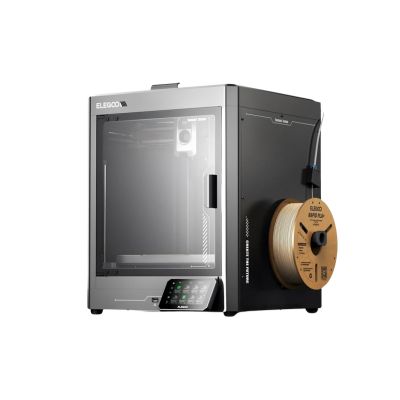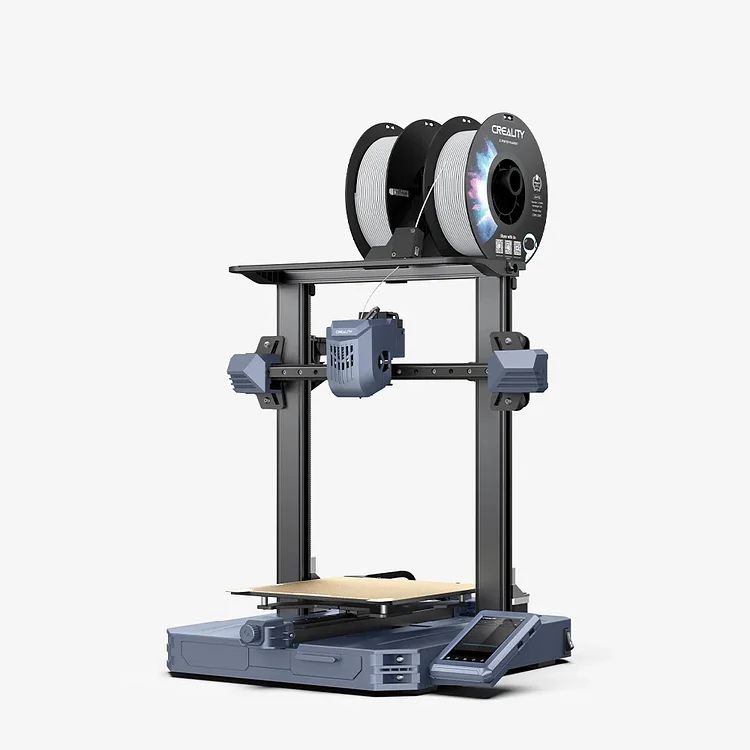Compare Centauri Carbon vs CR10 SE
Comparison between the best 3D printers
Choose the best 3D printer at the best price. The cheapest 3D printers are here.
Buy a 3D printer here with 3D Fila.
 |
 |
|
| Model | Centauri Carbon |
CR10 SE |
| Printing Material | Filament | Filament |
| Buy Filament for Elegoo Centauri Carbon | Buy Filament forCreality CR10 SE | |
| Estimated price | $500,00 | $386,00 |
| Manufacturer | Elegoo | Creality |
| Release Year | 2025 | 2023 |
| Print Volume [mm] | 256x256x256 | 220x220x265 |
| Printer Size [mm] | 500x500x600 | 490x470x625 |
| Weight [kg] | 17,5 | 6,9 |
| Power Loss Recovery | YES | NO |
| Enclosed printer | YES | NO |
| Bed Leveling | Automatic | |
| Filament End Sensor | YES | NO |
| Bed type | Heated | |
| Power supply system | Direct Drive | Direct Drive |
| Standard nozzle | 0,4 | 0,4 |
| Maximum Nozzle Temperature [°C] | 300 | 300 |
| Maximum Bed Temperature [°C] | 110 | 110 |
| Maximum printing speed [mm/s] | 500 | 600 |
| Filament holder | YES | YES |
| Camera for supervision | YES | YES |
| Recommended filaments | PLA, PETG, ABS, ASA, TPU, NYLON, CARBON FIBER | PLA, PETG, PET, TPU, PA Wood, ABS, ASA, PA, PLA-CF |
| Recommended slicers | Elegoo Slicer, Orca Slicer | Creality Print, Cura, Simplify3D, PrusaSlicer, Orca Slice |
| Maximum Resolution [mm] | 0,1 | 0,1 |
| Processor | ||
| Display | Touchscreen 4,3'' | |
| Power Supply | 350 W | |
| Connectivity | WiFi, SD, USB | USB, Wifi |
| Operating systems | Windows, Linux e Macbook | Windows, Linux, Macbook |
| Date of registration in the system | 2025-02-10 | 2024-07-02 |
| Release date | 2025 | 2023 |
| Extra features | The Elegoo Centauri Carbon is a CoreXY 3D printer with an enclosed structure, direct drive extruder, and hardened steel components for abrasive materials. It features automatic bed leveling, a touchscreen, a filament cutting system, and an elongated nozzle designed to reduce clogs. It offers Wi-Fi connectivity for remote file transfer and runs on a Klipper-based firmware, providing advanced control and precise adjustments. | The Creality CR10 SE stands out for its printing speed of up to 600 mm/s, easy and intuitive assembly, direct extruder with double gears, hotend with hardened steel nozzle and ceramic heater, automatic leveling with CR-Touch and pressure sensor, and use of Creality OS firmware based on Klipper, with automatic input shaping calibration. It also includes Wi-Fi connectivity, a filament out-of-stock sensor and a robust structure with linear rails on the X and Y axes. |
| Support for multiple colors and materials (AMS and CFS) | NO | NO |
Notes * |
||
| Cost-benefit | 8 / 10 | 7 / 10 |
| Hardware | 6 / 10 | 2.4 / 10 |
| Tela | . | . |
| Print volume | 4 / 10 | 3 / 10 |
| Performance | 4 / 10 | 5 / 10 |
Conclusion |
| In comparing the Elegoo Centauri Carbon and the Creality CR10 SE, it becomes clear that each printer serves different needs and priorities based on their features and specifications. The Elegoo Centauri Carbon, while positioned at a higher price point, offers more robust features such as automatic bed leveling, a larger print volume, and an enclosed structure. These attributes make it especially suited for more intricate and varied material printing, including abrasive filaments. Additionally, its advanced connectivity options and features like the filament end sensor enhance its usability. The estimated cost-to-benefit ratio suggests that while it may be pricier, the quality of prints and advanced functionalities could justify the investment for serious hobbyists or professionals. On the other hand, the Creality CR10 SE provides a commendable balance of performance and ease of use at a lower price. Its rapid printing speeds and straightforward assembly make it appealing for those who want efficiency without sacrificing quality. Although it lacks certain advanced features found in the Centauri, it still offers solid performance for many common printing tasks, making it an attractive choice for beginners or those on a tighter budget. Ultimately, the choice between these two printers will depend on the buyer's specific needs and budget. If advanced features and a larger print volume are priorities, the Elegoo Centauri Carbon may be the preferred option. However, for users seeking a more budget-friendly, user-friendly 3D printer, the Creality CR10 SE stands out as a compelling alternative. In summary, both models present distinct advantages, ensuring that potential buyers can find a suitable match for their 3D printing endeavors. |

